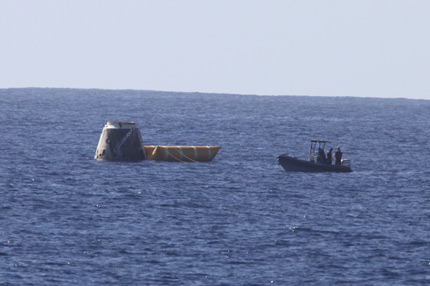The satellite returned from space after about three hours in a controlled descent into the Pacific Ocean, and if the rescue attempt is successful, it will be the first time that a private company returns a space vehicle and not a state

SpaceX successfully launched the Falcon 9 rocket on Wednesday, December 8 at 10:43 am EST (17:43 Israel time).
The launch was carried out for NASA's commercial launch program, which is supposed to transfer some of the agency's activities in low orbit to the private market. A launch attempt made an hour and a half earlier was cancelled.
The Falcon 9 rocket and the satellite on it were launched from the Air Force Station at the Cape Canaveral Space Center (near the Kennedy Space Center) and then the X40 launch.
It was reported that the Dragon capsule made two laps in space before re-entering the atmosphere. The Falcon missile reached a speed of about 25 km/h. The satellite itself dropped into the atmosphere after three hours, when it landed in the Pacific Ocean. If the operation to rescue the spaceship from the sea is successful, it will be the first time that a private company does this and not a government.
NASA awarded the company a $1.6 billion contract to develop a commercial launch capability. The motivation for the program is to provide supply services to the International Space Station. SpaceX signed three demonstration launches and 12 missions to carry cargo to and from the space station as part of commercial supply services to the space station for NASA. This puts Dragon one step above the Russians, Europeans and Japanese whose resupply spacecraft burn up in the atmosphere.
The Dragon satellite was supposed to fall about 800 kilometers west of Mexico in the Pacific Ocean. In the first phase it will be supply vehicles but also the use of a vehicle to fly astronauts to the space station.
SpaceX President Elon Musk said that, "A lot of things could go wrong and everything worked out. I'm kind of in shock."
